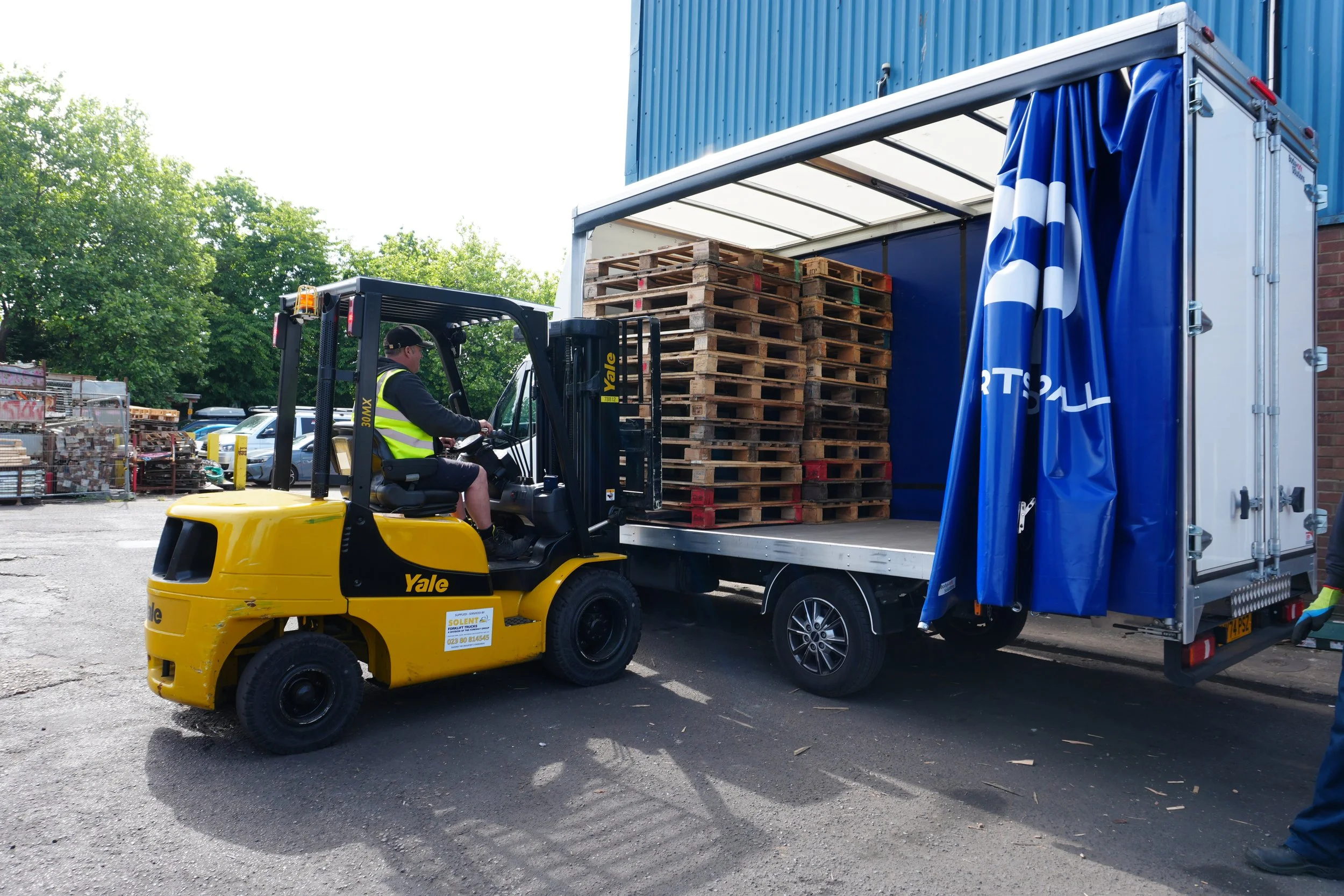A vs B vs C Grade Pallets Explained: Which Grade is Right for Your Operation?
When it comes to sourcing wooden pallets for your business, one of the most important decisions you’ll make is which grade to choose. At first glance, A, B, and C grade pallets might all look similar, but the differences can affect everything from load security to cost-efficiency.
At Portswood Pallets Ltd, we supply a wide range of graded and refurbished pallets to businesses across the UK. In this post, we’ll break down what each grade means, how they compare, and how to choose the right one for your operation.
✅ What Does Pallet Grading Mean?
Pallet grading is a way of categorising refurbished or used pallets based on their condition, appearance, and functionality. While exact definitions can vary slightly across suppliers, the general industry standard follows a three-tier system:
A Grade (Premium / Near-New)
B Grade (Functional / Mid-Level)
C Grade (Utility / Basic Use)
🥇 A Grade Pallets – Best for Appearance & Export
Condition:
Slightly used or refurbished to a high standard
Clean, dry, and structurally sound
Minimal cosmetic wear (no significant staining, splinters, or warping)
Often includes top deckboards and runners in near-new condition
Ideal for:
Export shipments (especially if heat-treated for ISPM15 compliance)
Retail display or consumer-facing applications
Businesses with stringent health and safety requirements
Pros:
✅ Reliable and professional appearance
✅ Low risk of breakage or collapse
✅ Often ISPM15 heat-treated and stamped
Cons:
🔺 Higher cost than B or C grades
🥈 B Grade Pallets – The Workhorse Option
Condition:
Heavily used but still structurally sound
May show signs of wear, such as repaired stringers, minor cracks, or light staining
May have mixed wood tones from previous repairs
Ideal for:
Warehouse operations
Internal logistics
General freight and distribution
Pros:
✅ More cost-effective than A Grade
✅ Durable for day-to-day industrial use
✅ Available in large volumes
Cons:
🔸 Not ideal for export or cleanroom use
🔸 May vary more in appearance
🥉 C Grade Pallets – Budget-Friendly Basics
Condition:
Heavily used, may have multiple repairs
Functionally sound but not visually appealing
Best suited for lightweight or non-critical loads
Ideal for:
One-way shipping or scrap use
Temporary storage
Businesses prioritising cost over aesthetics
Pros:
✅ Cheapest option available
✅ Helps reduce waste through reuse
✅ Great for single-use shipments
Cons:
🔻 Lower strength and visual appeal
🔻 Inconsistent appearance
🔻 Shorter lifespan
🛠️ Choosing the Right Grade: What to Consider
To choose the right pallet grade for your operation, ask yourself:
What is the weight of my product or load?
Heavy loads may require A or B grade for safety.Will the pallet be reused or is it one-way shipping?
One-time use? C Grade may do the job.Do my customers or end-users care about appearance?
Use A Grade for anything customer-facing.Do I need heat-treated (HT) pallets for export?
Many A and some B Grade pallets are ISPM15 compliant.What’s my budget?
C Grade is cost-effective but comes with trade-offs.
📦 We’ve Got the Right Grade for You
At Portswood Pallets, we stock a wide range of A, B, and C grade pallets, including standard UK sizes (1200 x 1000mm), Euro pallets (1200 x 800mm), and bespoke sizes for special applications.
Our experts can help you determine the best mix of quality and price to meet your operational goals.
🧠 Need Help Deciding?
Let our team guide you. Whether you're ordering 10 or 500 pallets, we’ll help you pick the perfect grade—and deliver quickly across Southampton, Hampshire, and the wider UK.

